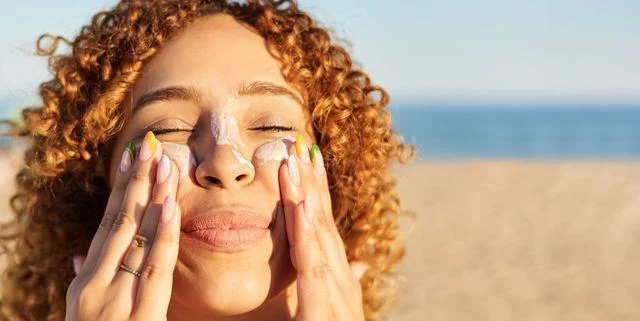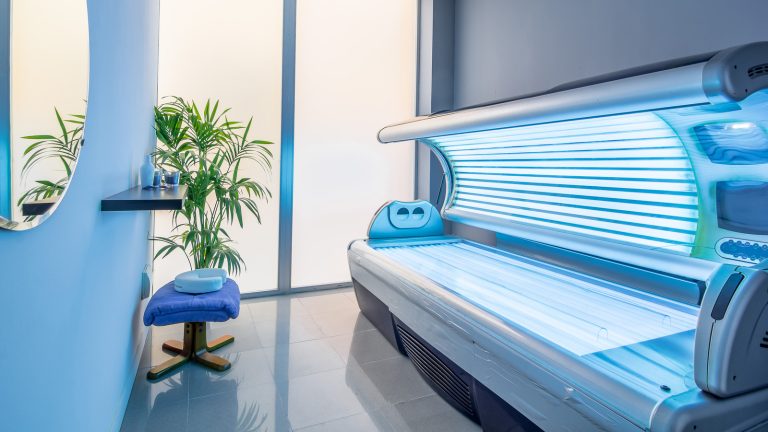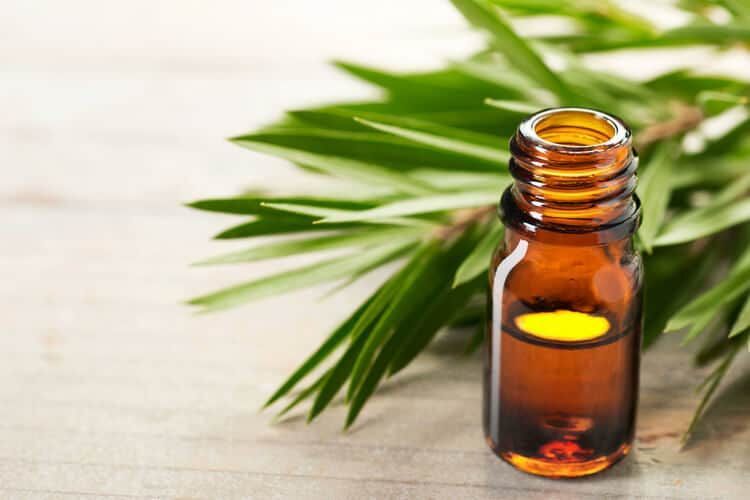Tanning Beds vs Sun Tanning: The Pros and Cons
Summer is coming, which means many people are eager to achieve that sun-kissed, bronzed glow. But what is the better option – tanning beds or sun tanning? Both methods come with risks and benefits that are important to understand. As an avid tanner myself, I have tried both options extensively.
In this guide, I will compare and contrast indoor tanning versus outdoor tanning so you can decide on your own sunless tanning or sun tanning regimen.
A Primer on UV Radiation from Tanning Beds and the Sun
Contents
- A Primer on UV Radiation from Tanning Beds and the Sun
- The Potential Dangers of Sun Tanning
- What Are the Risks of Using Tanning Beds?
- Comparing the Intensity of UV Rays from Each Source
- Impact on Skin Aging and Damage
- Are Tanning Beds Actually Worse Than Sun Tanning?
- Safe Tanning Precautions for Sun and Tanning Beds
- In Conclusion: Key Takeaways on Sun Tanning vs Tanning Beds
Before delving into the pros and cons, it’s helpful to understand ultraviolet (UV) radiation. There are two main types:
- UVA rays have longer wavelengths that penetrate deep into the dermis layer of skin. UVA rays are associated with skin aging, wrinkles, and indirect DNA damage that can cause cancer.
- UVB rays have shorter wavelengths that only reach the outer epidermis layer. UVB rays are responsible for sunburns and direct DNA damage that causes cancer.
Tanning beds primarily emit UVA rays, although some models do produce a small percentage of UVB rays. The sun naturally emits a more balanced mix of approximately 95% UVA and 5% UVB.
Both UVA and UVB radiation exposure contribute to an increased risk of skin cancer. But excessive UVA radiation in particular has been linked to more dangerous melanoma, the deadliest form of skin cancer.
The Potential Dangers of Sun Tanning
Although a golden sun-kissed glow may look healthy, sun tanning is not without its risks. Here are some of the key dangers associated with sun tanning:
- Increased risk of skin cancer – UV radiation causes genetic damage to skin cells, which can lead to cancerous mutations. Sun exposure is the #1 cause of most skin cancers.
- Premature aging – The UVA rays that penetrate deep into the dermis damage collagen and elastin fibers. This causes wrinkles, age spots, leather-like skin texture, and other signs of premature aging.
- Eye damage – UV exposure over time can contribute to cataracts, macular degeneration, and growths on the eye.
The risk for all of these problems increases with the amount and intensity of sun exposure over your lifetime. Sunburns, especially at a young age, dramatically increase the risk of melanoma later in life.
It’s important to understand these risks before proceeding with a sun tanning regimen.
What Are the Risks of Using Tanning Beds?
Indoor tanning comes with an entirely different set of risks and considerations:
- High intensity of UV rays – The UV radiation from tanning beds can be 10-15 times more intense than sunlight. This significantly increases the skin, eye, and genetic damage per minute of exposure.
- Increased risk of melanoma – Using tanning beds before age 30 increases melanoma risk by 75%. More frequent use compounds the problem further.
- Burns – Because of the intensity, you’re more likely to burn in a tanning bed, especially if you have fair skin. Burns signal significant DNA damage.
- Exposure to toxins – Some tanning beds emit tiny particles that deposit toxins into the lungs. Formaldehyde is also present.
As you can see, tanning beds pack a lot of intensity into each session. The damage can add up quickly compared to more gradual sun exposure.
Comparing the Intensity of UV Rays from Each Source
Given the intensity of tanning beds, it makes sense to dive deeper into the intensity differences compared to the sun:
- The concentrated UV rays from tanning beds are more dangerous per unit of time than diffuse sun rays.
- UVA rays account for 95% of tanning bed radiation, while they are less prevalent in sunlight. The UVA intensity is 10-15 times higher than the sun.
- UVB rays, which cause sunburns but also vitamin D production, are largely absent in tanning beds. The sun emits about 5% UVB.
Per minute, tanning beds provide a more intense dose of UVA radiation compared to the sun.

Impact on Skin Aging and Damage
With that context on UV ray intensity, how does that actually impact skin aging and damage? Here is a comparison:
- Sun exposure causes gradual skin damage over many years that builds up. Acute tanning bed use damages the skin in intense bursts.
- Tanning beds can destroy collagen fibers faster and cause wrinkles and sagging skin at a younger age than the sun.
- The sun provides some beneficial vitamin D production, whereas tanning beds provide almost none. Both will make the skin age faster.
Although tanning beds are typically used less frequently than sun exposure, they confer more skin damage per session. Frequent tanning bed use can rapidly take a toll on the skin’s appearance and health.
Are Tanning Beds Actually Worse Than Sun Tanning?
With all of these factors to consider, is one tanning method clearly safer than the other? The verdict is…it’s complicated.
- Tanning beds are clearly more dangerous per unit of time due to the intensity of UV exposure. The risks of use at a young age are very concerning.
- However, chronic sun exposure over a lifetime confers significant damage as well. The total UV radiation exposure is likely higher from the sun in the long run for most people.
- For younger users, tanning beds likely pose a greater risk if used frequently and intensely due to the concentration of UVA rays. Older generations did not grow up with indoor tanning technology.
So while tanning beds pack more radiation into acute bursts, cumulative exposure from the sun is an important factor as well. Both should be used cautiously.
Safe Tanning Precautions for Sun and Tanning Beds
If you do choose to pursue a tanned look, there are precautions you can take to minimize the risks:
Sunscreen – Apply broad spectrum SPF 30+ sunscreen whenever exposing your skin to sunlight or tanning beds. Reapply frequently.
Protective clothing – Wear hats, sunglasses, and tightly woven fabrics in the sun. Tanning bed goggles are mandatory.
Avoid peak hours – With the sun, limit exposure from 10am to 4pm when UV rays are most direct.
Know your limits – Limit sun sessions based on your skin type. Fair skin burns quickly. Tanning beds should be limited to 4-6 visits per month.
Moderation is key – Occasional, gradual tanning is safer than intensive schedules for both outdoor and indoor tanning. Aim for gradual color building.
Consider alternatives – Sunless tanning lotions provide UV-free color if skin cancer risks are a key concern.
With prudent precautions, both sun tanning and tanning beds can be managed responsibly to minimize harm. But the risks remain higher with intensive tanning bed use. Thoroughly research the risks before committing to an indoor tanning regimen. While many people desire a tanned glow, your long-term skin health deserves your greatest care and caution.
In Conclusion: Key Takeaways on Sun Tanning vs Tanning Beds
To summarize the key points:
- Tanning beds primarily emit high intensity UVA rays, while the sun provides a blend of mostly UVA with some UVB rays. Both UVA and UVB cause skin cancer.
- Sun tanning damages skin gradually over time. Tanning beds confer more intense damage over acute, repeated bursts.
- For younger generations, frequent tanning bed use is considered higher risk due to intensity and frequency. But chronic sun damage also builds up risks over a lifetime.
- Practicing caution, moderation, and smart sun protection is important regardless of your tanning method of choice. The risks are real for both options.
I hope this comprehensive comparison of tanning beds versus sun tanning has provided you with the facts to make an informed decision. While a tanned, glowing complexion is attractive, it must be balanced carefully against long-term skin health. Prioritize your safety, use moderation, and enjoy responsibly!

Founded by Sophia Rodriguez, IGXO Cosmetics is a PETA-certified, cruelty-free, and vegan makeup brand.





